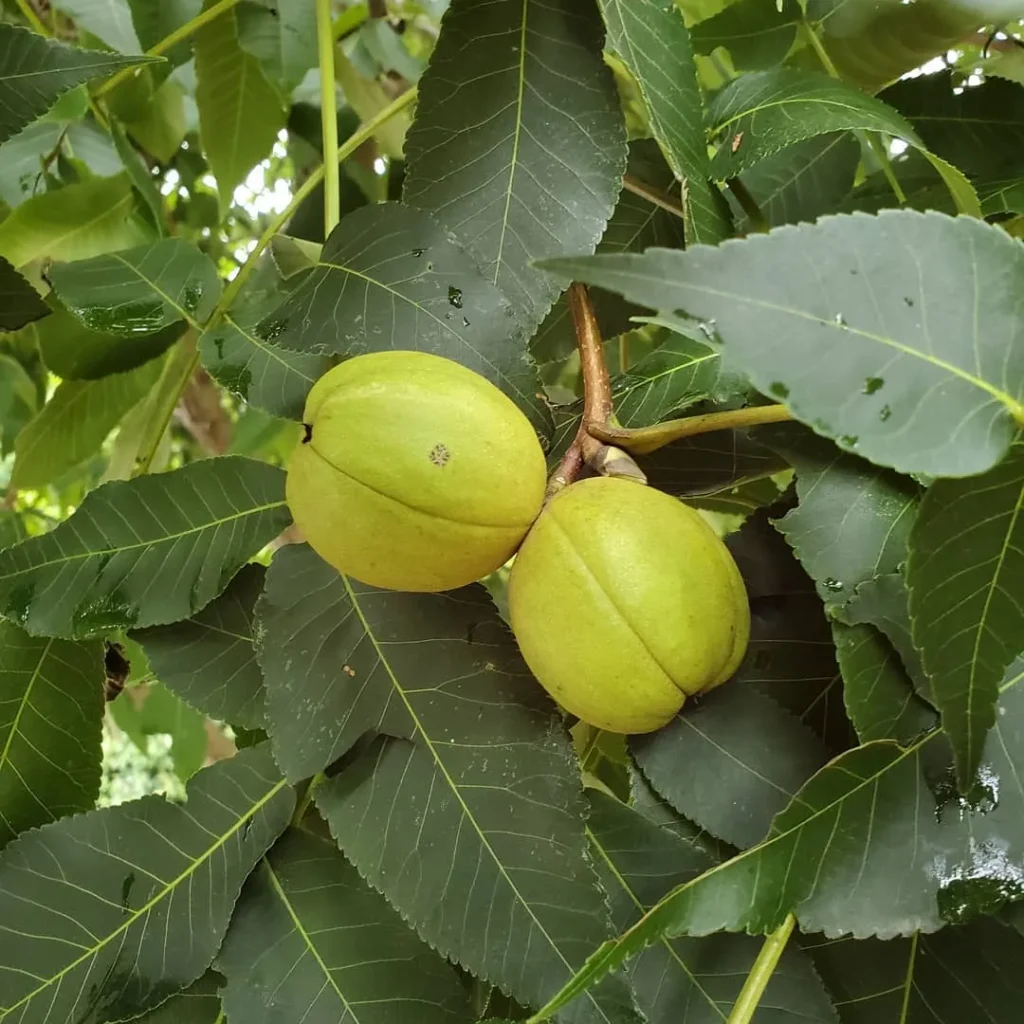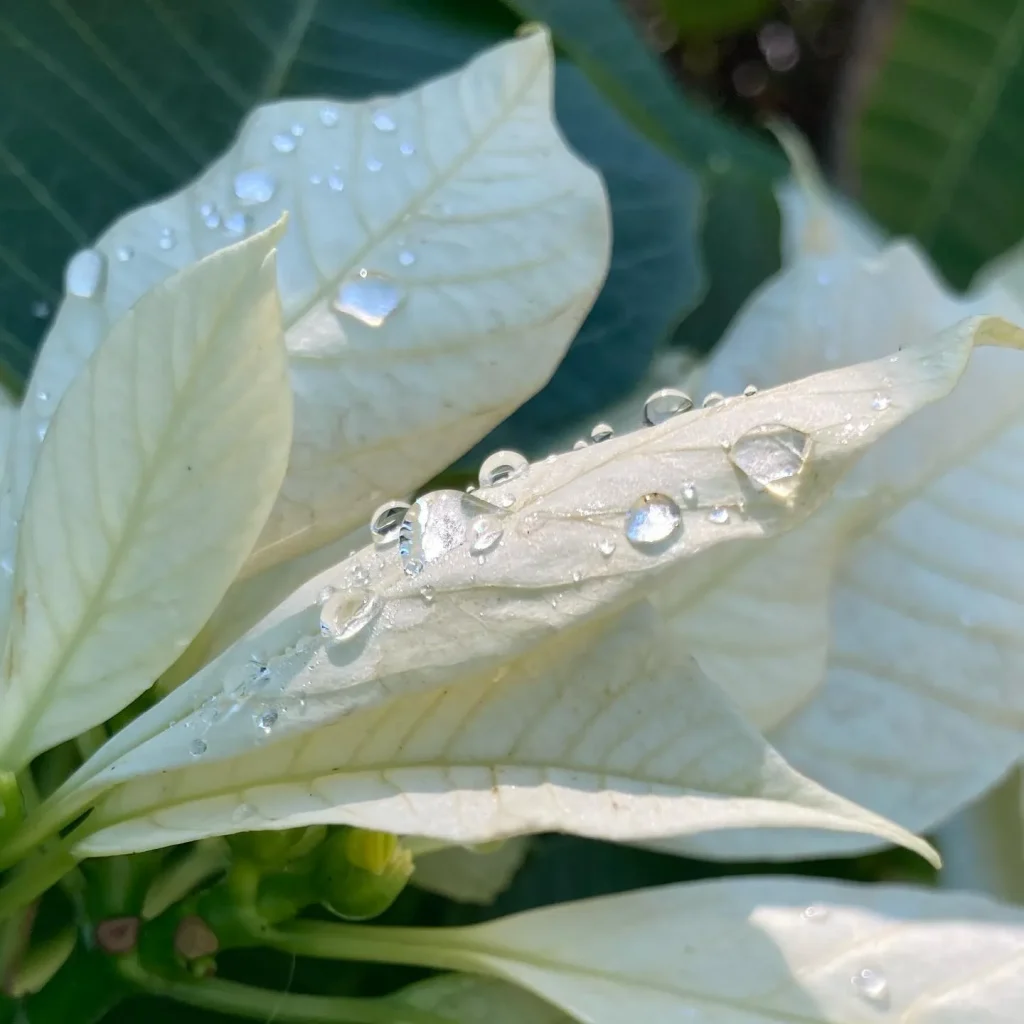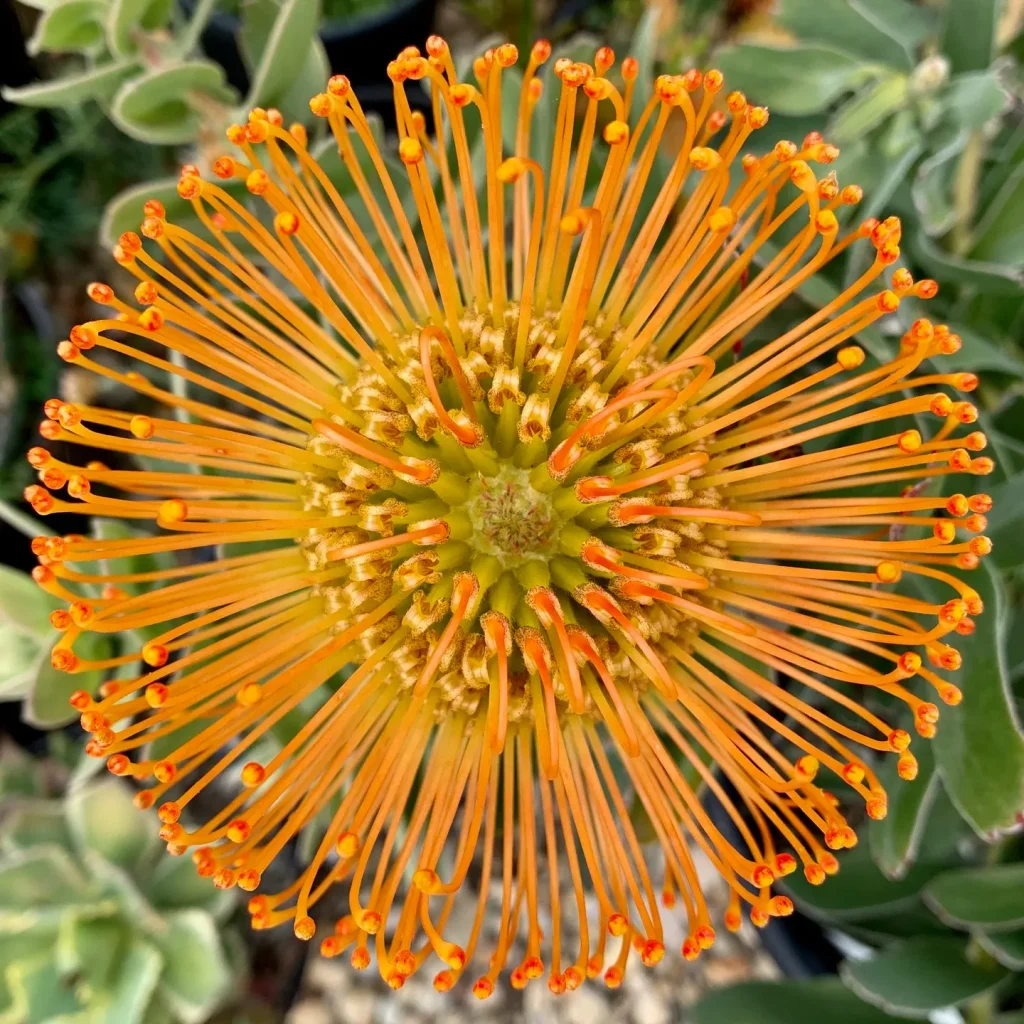
July 25 – Corydalis
"Corydalis, the fumewort, defines July 25."
Corydalis symbolizes insight and adaptability. You see opportunities where others see obstacles and find beauty in the unexpected. Like its delicate blooms, you are full of subtle charm.
What Is Corydalis?
Corydalis is a genus of flowering plants belonging to the poppy family, Papaveraceae. With over 500 species, Corydalis offers a diverse range of colors, shapes, and sizes. The plants are known for their unique, tubular flowers and fern-like foliage. Popular in gardens, these plants add a touch of elegance and color.
Corydalis species
- Corydalis aconitiflora Lidén
- Corydalis acropteryx Fedde
- Corydalis acuminata Franch.
- Corydalis adiantifolia Hook.f. & Thomson
- Corydalis adoxifolia C.Y.Wu
- Corydalis adunca Maxim.
- Corydalis aeaeae X.F.Gao, Lidén, Y.W.Wang & Y.L.Peng
- Corydalis aeditua Lidén & Z.Y.Su
- Corydalis afghanica Gilli
- Corydalis ainae (Rukšāns ex Lidén) Lazkov & Sennikov
- Corydalis aitchisonii Popov
- Corydalis alaschanica (Maxim.) Peschkova
- Corydalis albipetala B.U.Oh
- Corydalis alexeenkoana N.Busch
- Corydalis alpestris C.A.Mey.
- Corydalis amarnathiana Dar, Semi & Naqshi
- Corydalis ambigua Cham. & Schltdl.
- Corydalis ampelos Lidén & Z.Y.Su
- Corydalis amphipogon Lidén
- Corydalis amplisepala Z.Y.Su & Lidén
- Corydalis anaginova Lidén & Z.Y.Su
- Corydalis ananke Lidén
- Corydalis anethifolia C.Y.Wu & Z.Y.Su
- Corydalis angusta Z.Y.Su & Lidén
- Corydalis angustifolia (M.Bieb.) DC.
- Corydalis anthocrene Lidén & Van De Veire
- Corydalis anthriscifolia Franch.
- Corydalis appendiculata Hand.-Mazz.
- Corydalis aquilegioides Z.Y.Su
- Corydalis arctica Popov
- Corydalis arcuata M.K.Pathak, Chowlu, B.Saikia & Lidén
- Corydalis atuntsuensis W.W.Sm.
- Corydalis aurantiaca Ludlow & Stearn
- Corydalis aurea Willd.
- Corydalis auricilla Lidén & Z.Y.Su
- Corydalis auriculata Lidén & Z.Y.Su
- Corydalis austroshaanxiensis D.Wang
- Corydalis baekunnensis Y.N.Lee
- Corydalis balansae Prain
- Corydalis balsamiflora Prain
- Corydalis barbisepala Hand.-Mazz. & Fedde
- Corydalis begljanovae Stepanov
- Corydalis benecincta W.W.Sm.
- Corydalis bibracteolata Z.Y.Su
- Corydalis biflora Lidén, M.K.Pathak, Chowlu & B.Saikia
- Corydalis bijiangensis C.Y.Wu & H.Chuang
- Corydalis bimaculata C.Y.Wu & T.Y.Shu
- Corydalis birmanica Lidén
- Corydalis blanda Schott
- Corydalis bombylina Stepanov
- Corydalis bonghwaensis M.Kim & H.Jo
- Corydalis borii C.E.C.Fisch.
- Corydalis bosbutooensis Lazkov
- Corydalis brachyceras Lidén & Van De Veire
- Corydalis bracteata (Stephan ex Willd.) Pers.
- Corydalis brevipedicellata Lidén
- Corydalis brevirostrata C.Y.Wu & T.Y.Shu
- Corydalis brunneovaginata Fedde
- Corydalis bucharica Popov
- Corydalis × budensis Vojda
- Corydalis bulbifera C.Y.Wu
- Corydalis bulbilligera Z.Y.Wu
- Corydalis bulleyana Diels
- Corydalis bungeana Turcz.
- Corydalis buschii Nakai
- Corydalis calcarea Albov
- Corydalis calliantha D.G.Long
- Corydalis calycina Lidén
- Corydalis calycosa X.Zhuang
- Corydalis campulicarpa Hayata
- Corydalis capillipes Franch.
- Corydalis capitata X.F.Gao, Lidén, Y.W.Wang & Y.L.Peng
- Corydalis capnoides (L.) Pers.
- Corydalis caput-medusae Z.Y.Su & Lidén
- Corydalis carinata Lidén & Z.Y.Su
- Corydalis caseana A.Gray
- Corydalis cashmeriana Royle
- Corydalis casimiriana Duthie & Prain
- Corydalis cataractarum Lidén
- Corydalis caucasica DC.
- Corydalis caudata (Lam.) Pers.
- Corydalis cava (L.) Schweigg. & Körte
- Corydalis cavei D.G.Long
- Corydalis chaerophylla DC.
- Corydalis chamdoensis C.Y.Wu & H.Chuang
- Corydalis changuensis D.G.Long
- Corydalis cheilanthifolia Hemsl.
- Corydalis cheilosticta Z.Y.Su & Lidén
- Corydalis cheirifolia Franch.
- Corydalis chihuahuana Fedde
- Corydalis chingii Fedde
- Corydalis chionophila Czerniak.
- Corydalis chrysosphaera Marquand & Airy Shaw
- Corydalis clarkei Prain
- Corydalis clavibracteata Ludlow & Stearn
- Corydalis clematis H.Lév.
- Corydalis cofouensis H.Lév.
- Corydalis conorhiza Ledeb.
- Corydalis conspersa Maxim.
- Corydalis cornuta Royle
- Corydalis corymbosa C.Y.Wu & T.Y.Shu
- Corydalis crassifolia Royle
- Corydalis crispa Prain
- Corydalis crista-galli Maxim.
- Corydalis cristata Maxim.
- Corydalis crithmifolia Royle
- Corydalis cryptogama Z.Y.Su & Lidén
- Corydalis crystallina (Torr. & A.Gray) Engelm. ex A.Gray
- Corydalis curvicalcarata Miyabe & T.C.Ku
- Corydalis curviflora Maxim. ex Hemsl.
- Corydalis curvisiliqua (A.Gray) Engelm. ex A.Gray
- Corydalis cytisiflora (Fedde) Lidén ex C.Y.Wu, H.Chuang & Z.Y.Su
- Corydalis dajingensis C.Y.Wu & T.Y.Shu
- Corydalis darwasica Regel ex Prain
- Corydalis dasyptera Maxim.
- Corydalis dautica Mikhailova
- Corydalis davidii Franch.
- Corydalis decumbens (Thunb.) Pers.
- Corydalis degensis C.Y.Wu & H.Chuang
- Corydalis delavayi Franch.
- Corydalis delicatula D.G.Long
- Corydalis delphinioides Fedde
- Corydalis densiflora C.Presl
- Corydalis densispica C.Y.Wu
- Corydalis devendrae Pusalkar
- Corydalis diffusa Lidén
- Corydalis diphylla Wall.
- Corydalis dolichocentra Z.Y.Su & Lidén
- Corydalis dongchuanensis Z.Y.Su & Lidén
- Corydalis dorjii D.G.Long
- Corydalis drakeana Prain
- Corydalis drepanantha D.G.Long
- Corydalis dubia Prain
- Corydalis duclouxii H.Lév. & Vaniot
- Corydalis dulongjiangensis X.Zhuang
- Corydalis duthiei Maxim.
- Corydalis ecristata (Prain) D.G.Long
- Corydalis edulis Maxim.
- Corydalis elata Bureau & Franch.
- Corydalis elegans Wall. ex Hook.f. & Thomson
- Corydalis ellipticarpa C.Y.Wu & Z.Y.Su
- Corydalis emanueli C.A.Mey.
- Corydalis enantiophylla Lidén
- Corydalis erdelii Zucc.
- Corydalis erythrocarpa H.Lév.
- Corydalis esquirolii H.Lév.
- Corydalis eugeniae Fedde
- Corydalis falconeri Hook.f. & Thomson
- Corydalis fangshanensis W.T.Wang
- Corydalis fargesii Franch.
- Corydalis farreri Lidén
- Corydalis feddeana H.Lév.
- Corydalis fedtschenkoana Regel
- Corydalis filicina Prain
- Corydalis filiformis Royle
- Corydalis filisecta C.Y.Wu
- Corydalis filistipes Nakai
- Corydalis fimbrillifera Korsh.
- Corydalis fimbripetala Ludlow & Stearn
- Corydalis flabellata Edgew.
- Corydalis flaccida Hook.f. & Thomson
- Corydalis flavula (Raf.) DC. Plant FAQs: Corydalis Flavula
- Corydalis flexuosa Franch.
- Corydalis foetida C.Y.Wu & Z.Y.Su
- Corydalis foliaceobracteata C.Y.Wu & Z.Y.Su
- Corydalis franchetiana Prain
- Corydalis fukuharae Lidén
- Corydalis fumariifolia Maxim.
- Corydalis gamosepala Maxim.
- Corydalis gaoxinfeniae Lidén
- Corydalis geraniifolia Hook.f. & Thomson
- Corydalis gigantea Trautv. & C.A.Mey.
- Corydalis giraldii Fedde
- Corydalis glaucescens Regel
- Corydalis glaucissima Lidén & Z.Y.Su
- Corydalis glycyphyllos Fedde
- Corydalis gorinensis V.M.Van
- Corydalis gorodkovii Karav.
- Corydalis gortschakovii Schrenk ex Fisch. & C.A.Mey.
- Corydalis gotlandica Lidén
- Corydalis gouldii Lidén
- Corydalis govaniana Wall.
- Corydalis gracilis Ledeb.
- Corydalis gracillima C.Y.Wu ex Govaerts
- Corydalis grandicalyx B.U.Oh & Y.S.Kim
- Corydalis grandiflora C.Y.Wu & Z.Y.Su
- Corydalis griffithii Boiss.
- Corydalis grubovii Michajlova
- Corydalis gymnopoda Z.Y.Su & Lidén
- Corydalis gypsophila Michajlova
- Corydalis gyrophylla Lidén
- Corydalis halei (Small) Fernald & B.G.Schub.
- Corydalis hallaisanensis H.Lév.
- Corydalis hamata Franch.
- Corydalis hannae Kanitz
- Corydalis harry-smithii Lidén & Z.Y.Su
- Corydalis × hausmannii Klebelsberg
- Corydalis haussknechtii Lidén
- Corydalis hebephylla C.Y.Wu & Z.Y.Su
- Corydalis hegangensis W.T.Wang
- Corydalis helodes Lidén & Van De Veire
- Corydalis hemidicentra Hand.-Mazz.
- Corydalis hemsleyana Franch. & Prain
- Corydalis hendersonii Hemsl.
- Corydalis henrikii Lidén
- Corydalis hepaticifolia C.Y.Wu & T.Y.Shu
- Corydalis heracleifolia C.Y.Wu & Z.Y.Su
- Corydalis heterocarpa Siebold & Zucc.
- Corydalis heterocentra Diels
- Corydalis heterodonta H.Lév.
- Corydalis heteropetala Ochiauri
- Corydalis heterophylla Michajlova
- Corydalis heterothylax C.Y.Wu ex Z.Y.Su & Lidén
- Corydalis hindukushensis Wendelbo & Grey-Wilson
- Corydalis homopetala Diels
- Corydalis hongbashanensis Lidén & Y.W.Wang
- Corydalis hookeri Prain
- Corydalis hsiaowutaishanensis T.P.Wang
- Corydalis hualongshanensis D.Wang
- Corydalis huangshanensis L.Q.Huang & H.S.Peng
- Corydalis humicola Hand.-Mazz.
- Corydalis humilis B.U.Oh & Y.S.Kim
- Corydalis humosa Migo
- Corydalis imbricata Z.Y.Su & Lidén
- Corydalis impatiens (Pall.) Fisch. ex DC.
- Corydalis incisa (Thunb.) Pers.
- Corydalis inconspicua Bunge ex Ledeb.
- Corydalis inopinata Prain ex Fedde
- Corydalis integra Barbey & Fors.-Major
- Corydalis intermedia (L.) Mérat
- Corydalis iochanensis H.Lév.
- Corydalis ischnosiphon Lidén & Z.Y.Su
- Corydalis jigmei C.E.C.Fisch. & Kaul
- Corydalis jingyuanensis C.Y.Wu & H.Chuang
- Corydalis jiulongensis Z.Y.Su & Lidén
- Corydalis juncea Wall.
- Corydalis kailiensis Z.Y.Su
- Corydalis kashgarica Rupr.
- Corydalis khasiana Lidén
- Corydalis kiautschouensis Poelln.
- Corydalis kingdonis Airy Shaw
- Corydalis kingii Prain
- Corydalis kiukiangensis C.Y.Wu, Z.Y.Su & Lidén
- Corydalis kokiana Hand.-Mazz.
- Corydalis kovakensis Michajlova
- Corydalis krasnovii Michajlova
- Corydalis kuruchuensis Lidén
- Corydalis kushiroensis Fukuhara
- Corydalis lacrimuli-cuculi Stepanov
- Corydalis laelia Prain
- Corydalis lagochila Lidén & Z.Y.Su
- Corydalis lasiocarpa Lidén & Z.Y.Su
- Corydalis lathyroides Prain
- Corydalis lathyrophylla C.Y.Wu
- Corydalis latiflora Hook.f. & Thomson
- Corydalis latilepidota W.T.Wang
- Corydalis latiloba (Franch.) Hand.-Mazz.
- Corydalis laucheana Fedde
- Corydalis × laxa Fr.
- Corydalis laxiflora Lidén
- Corydalis ledebouriana Kar. & Kir.
- Corydalis leptantha Lidén
- Corydalis leptocarpa Hook.f. & Thomson
- Corydalis leptophylla Lidén
- Corydalis leucanthema C.Y.Wu
- Corydalis lhasaensis C.Y.Wu & Z.Y.Su
- Corydalis lhorongensis C.Y.Wu & H.Chuang
- Corydalis liana Lidén & Z.Y.Su
- Corydalis linarioides Maxim.
- Corydalis lineariloba Siebold & Zucc.
- Corydalis linearis C.Y.Wu
- Corydalis linjiangensis Z.Y.Su
- Corydalis linstowiana Fedde
- Corydalis livida Maxim.
- Corydalis longibracteata Ludlow & Stearn
- Corydalis longicalcarata H.Chuang & Z.Y.Su
- Corydalis longicornu Franch.
- Corydalis longipes DC.
- Corydalis longistyla Z.Y.Su & Lidén
- Corydalis longkiensis C.Y.Wu, Lidén & Z.Y.Su
- Corydalis lophophora Lidén & Z.Y.Su
- Corydalis lopinensis Franch.
- Corydalis lowndesii Lidén
- Corydalis ludlowii Stearn
- Corydalis lupinoides Marquand & Airy Shaw
- Corydalis luquanensis H.Chuang
- Corydalis lydica Lidén
- Corydalis macrocalyx Litv.
- Corydalis macrocentra Regel
- Corydalis maculata B.U.Oh & Y.S.Kim
- Corydalis madida Lidén & Z.Y.Su
- Corydalis magadanica A.P.Khokhr.
- Corydalis magni Pusalkar
- Corydalis mairei H.Lév.
- Corydalis maracandica Michajlova
- Corydalis mayae Hand.-Mazz.
- Corydalis mediterranea Z.Y.Su & Lidén
- Corydalis megacalyx Ludlow & Stearn
- Corydalis megalosperma Z.Y.Su
- Corydalis meifolia Wall.
- Corydalis melanochlora Maxim.
- Corydalis meyori Lidén, R.Mili & B.Saikia
- Corydalis mianxianensis D.Wang
- Corydalis micrantha (Engelm. ex A.Gray) A.Gray ex J.M.Coult.
- Corydalis microflora (C.Y.Wu & H.Chuang) Z.Y.Su & Lidén
- Corydalis microphylla Michajlova
- Corydalis microsperma Lidén
- Corydalis milarepa Lidén & Z.Y.Su
- Corydalis mildbraedii Fedde
- Corydalis minutiflora C.Y.Wu
- Corydalis mira (Batalin) C.Y.Wu & H.Chuang
- Corydalis moorcroftiana Wall. ex Hook.f. & Thomson
- Corydalis moupinensis Franch.
- Corydalis mucronata Franch.
- Corydalis mucronifera Maxim.
- Corydalis mucronipetala (C.Y.Wu & H.Chuang) Lidén & Z.Y.Su
- Corydalis muliensis C.Y.Wu & Z.Y.Su
- Corydalis multiflora Michajlova
- Corydalis murgabica Michajlova
- Corydalis myriophylla Lidén
- Corydalis nana Royle
- Corydalis nanchuanensis S.R.Yi
- Corydalis nanwutaishanensis Z.Y.Su & Lidén
- Corydalis nematopoda Lidén & Z.Y.Su
- Corydalis nemoralis C.Y.Wu & H.Chuang
- Corydalis nidus-serpentis Stepanov
- Corydalis nigroapiculata C.Y.Wu
- Corydalis nobilis (L.) Pers.
- Corydalis nodosa Mikhailova
- Corydalis nubicola Z.Y.Su & Lidén
- Corydalis nudicaulis Regel
- Corydalis ochotensis Turcz.
- Corydalis ohii Lidén
- Corydalis oligantha Ludlow & Stearn
- Corydalis oligosperma C.Y.Wu & T.Y.Shu
- Corydalis omeiana (C.Y.Wu & H.Chuang) Z.Y.Su & Lidén
- Corydalis onobrychis Fedde
- Corydalis ophiocarpa Hook.f. & Thomson
- Corydalis oppositifolia DC.
- Corydalis oreocoma Lidén & Z.Y.Su
- Corydalis ornata Lidén & Zetterl.
- Corydalis orthopoda Hayata
- Corydalis oxalidifolia Ludlow & Stearn
- Corydalis oxypetala Franch.
- Corydalis pachycentra Franch.
- Corydalis pachypoda (Franch.) Hand.-Mazz.
- Corydalis paczoskii N.Busch
- Corydalis paeoniifolia (Stephan) Pers.
- Corydalis pakistanica Jafri
- Corydalis pallida Pers.
- Corydalis pallidiflora (Rupr.) N.Busch
- Corydalis panda Lidén & Y.W.Wang
- Corydalis paniculigera Regel & Schmalh.
- Corydalis papillosa Z.Y.Su & Lidén
- Corydalis parviflora Z.Y.Su & Lidén
- Corydalis paschei Lidén
- Corydalis pauciflora (Stephan) Pers.
- Corydalis pauciovulata Ohwi
- Corydalis peltata Lidén & Z.Y.Su
- Corydalis persica Cham. & Schltdl.
- Corydalis petrodoxa Lidén & Z.Y.Su
- Corydalis petrophila Franch.
- Corydalis petroselinifolia H.Lév.
- Corydalis philippi Michajlova
- Corydalis pingwuensis Z.Y.Wu
- Corydalis pinnata Lidén & Z.Y.Su
- Corydalis pinnatibracteata Y.W.Wang, Lidén, Q.R.Liu & M.L.Zhang
- Corydalis platycarpa (Maxim. ex Palib.) Makino
- Corydalis podlechii Lidén
- Corydalis polygalina Hook.f. & Thomson
- Corydalis polyphylla Hand.-Mazz.
- Corydalis popovii Nevski ex Popov
- Corydalis porphyrantha C.Y.Wu
- Corydalis portenieri Mikhailova
- Corydalis potaninii Maxim.
- Corydalis praecipitorum C.Y.Wu, Z.Y.Su & Lidén
- Corydalis prattii Franch.
- Corydalis procera Lidén & Z.Y.Su
- Corydalis pseudimpatiens Fedde
- Corydalis pseudoadoxa C.Y.Wu & H.Chuang
- Corydalis pseudoadunca Popov
- Corydalis pseudoalpestris Popov
- Corydalis pseudoamplisepala D.Wang
- Corydalis pseudobalfouriana Lidén & Z.Y.Su
- Corydalis pseudobarbisepala Fedde
- Corydalis pseudocristata Fedde
- Corydalis pseudodensispica Z.Y.Su & Lidén
- Corydalis pseudodrakeana Lidén
- Corydalis pseudofargesii H.Chuang
- Corydalis pseudofilisecta Lidén & Z.Y.Su
- Corydalis pseudofluminicola Fedde
- Corydalis pseudohemsleyana D.Wang
- Corydalis pseudoincisa C.Y.Wu, Z.Y.Su & Lidén
- Corydalis pseudojuncea Ludlow & Stearn
- Corydalis pseudolongipes Lidén
- Corydalis pseudomairei C.Y.Wu ex Z.Y.Su & Lidén
- Corydalis pseudomicrantha Fedde
- Corydalis pseudomicrophylla Z.Y.Su
- Corydalis pseudomucronata C.Y.Wu, Z.Y.Su & Liden
- Corydalis pseudorupestris Lidén & Z.Y.Su
- Corydalis pseudosibirica Lidén & Z.Y.Su
- Corydalis pseudostricta Popov
- Corydalis pseudotongolensis Lidén
- Corydalis pseudoweigoldii Z.Y.Su
- Corydalis pterygopetala Hand.-Mazz.
- Corydalis pubicaula C.Y.Wu & H.Chuang
- Corydalis pulchella Aitch. & Hemsl.
- Corydalis pumila (Host) Rchb.
- Corydalis punicea C.Y.Wu ex Govaerts
- Corydalis pycnopus Lidén
- Corydalis pygmaea C.Y.Wu & T.Y.Shu
- Corydalis qilianshanica Mikhailova
- Corydalis qinghaiensis Z.Y.Su & Lidén
- Corydalis quantmeyeriana Fedde
- Corydalis quinquefoliolata Ludlow & Stearn
- Corydalis racemosa (Thunb.) Pers.
- Corydalis raddeana Regel
- Corydalis radicans Hand.-Mazz.
- Corydalis rarissima Michajlova
- Corydalis regia Z.Y.Su & Lidén
- Corydalis repens Mandl & Muhldorf
- Corydalis retingensis Ludlow
- Corydalis rheinbabeniana Fedde
- Corydalis rorida H.Chuang
- Corydalis rostellata Lidén
- Corydalis rubrisepala Lidén
- Corydalis ruksansii Lidén
- Corydalis rupestris Kotschy
- Corydalis rupifraga C.Y.Wu & Z.Y.Su
- Corydalis rutifolia (Sm.) DC.
- Corydalis saccata Z.Y.Su
- Corydalis sajanensis Peschkova
- Corydalis saltatoria W.W.Sm.
- Corydalis × samuelssonii Fedde
- Corydalis sangardanica Mikhailova
- Corydalis sarcolepis Lidén & Z.Y.Su
- Corydalis saxicola Bunting
- Corydalis scaberula Maxim.
- Corydalis schanginii (Pall.) B.Fedtsch.
- Corydalis schelesnowiana Regel & Schmalh.
- Corydalis schistostigma X.F.Gao, Lidén, Y.W.Wang & Y.L.Peng
- Corydalis schusteriana Fedde
- Corydalis schweriniana Fedde
- Corydalis scouleri Hook.
- Corydalis semenowii Regel & Herder
- Corydalis sewerzowii Regel
- Corydalis shakyae Lidén
- Corydalis sheareri S.Moore
- Corydalis shennongensis H.Chuang
- Corydalis shensiana Lidén ex C.Y.Wu, H.Chuang & Z.Y.Su
- Corydalis sherriffii Ludlow
- Corydalis shimienensis C.Y.Wu & Z.Y.Su
- Corydalis sibirica (L.f.) Pers.
- Corydalis sigmantha Z.Y.Su & C.Y.Wu
- Corydalis sigmoides C.Y.Wu & H.Chuang
- Corydalis sikkimensis (Prain) Fedde
- Corydalis simplex Lidén
- Corydalis smithiana Fedde
- Corydalis sochivkoi Michajlova
- Corydalis solida (L.) Clairv.
- Corydalis sophronitis Z.Y.Su & Lidén
- Corydalis spathulata Prain ex Craib
- Corydalis speciosa Maxim.
- Corydalis spicata Lidén
- Corydalis staintonii Ludlow & Stearn
- Corydalis stenantha Franch.
- Corydalis stenophylla B.Saikia, Chowlu, M.K.Pathak & Lidén
- Corydalis stipulata Lidén
- Corydalis stolonifera Lidén
- Corydalis stracheyi Duthie ex Prain
- Corydalis straminea Maxim. ex Hemsl.
- Corydalis straminoides C.Y.Wu & Z.Y.Su
- Corydalis striatocarpa H.Chuang
- Corydalis stricta Stephan ex DC.
- Corydalis subjenisseensis E.M.Antipova
- Corydalis subverticillata Lazkov
- Corydalis susannae Lidén
- Corydalis suzhiyunii Lidén
- Corydalis taliensis Franch.
- Corydalis talpina Stepanov
- Corydalis tamarae Stepanov
- Corydalis tangutica Peschkova
- Corydalis tarkiensis Prokh.
- Corydalis tauricola (Cullen & P.H.Davis) Lidén
- Corydalis teberdensis A.P.Khokhr.
- Corydalis temolana C.Y.Wu & H.Chuang
- Corydalis temulifolia Franch.
- Corydalis tenerrima C.Y.Wu
- Corydalis tenuipes Lidén & Z.Y.Su
- Corydalis ternata (Nakai) Nakai
- Corydalis ternatifolia C.Y.Wu, Z.Y.Su & Lidén
- Corydalis terracina Lidén
- Corydalis thasia (Stoj. & Kitan.) Stoj. & Kitan.
- Corydalis thyrsiflora Prain
- Corydalis tianshanica Lidén
- Corydalis tianzhuensis M.S.Yan & C.J.Wang
- Corydalis tibetica Hook.f. & Thomson
- Corydalis tibeto-oppositifolia C.Y.Wu & T.Y.Shu
- Corydalis tibetoalpina C.Y.Wu & T.Y.Shu
- Corydalis tomentella Franch.
- Corydalis tongolensis Franch.
- Corydalis trachycarpa Maxim.
- Corydalis transalaica Popov
- Corydalis trifoliolata Franch.
- Corydalis trilobipetala Hand.-Mazz.
- Corydalis trisecta Franch.
- Corydalis triternata Zucc.
- Corydalis triternatifolia C.Y.Wu
- Corydalis tsangensis Lidén & Z.Y.Su
- Corydalis tsayulensis C.Y.Wu & H.Chuang
- Corydalis turtschaninovii Besser
- Corydalis udokanica Peschkova
- Corydalis uncinata Lidén
- Corydalis uncinatella Lidén
- Corydalis uniflora (Sieber) Nyman
- Corydalis uranoscopa Lidén
- Corydalis ussuriensis Aparina
- Corydalis uvaria Lidén & Z.Y.Su
- Corydalis vaginans Royle
- Corydalis verna Z.Y.Su & Lidén
- Corydalis verticillaris DC.
- Corydalis violacea (Vicary ex Prain) Pusalkar & D.K.Singh
- Corydalis virginea Lidén & Z.Y.Su
- Corydalis vittae Kolak.
- Corydalis vivipara Fedde
- Corydalis × vorobievii Urusov
- Corydalis vyschinii Bezd.
- Corydalis watanabei Kitag.
- Corydalis weigoldii Fedde
- Corydalis wendelboi Lidén
- Corydalis wilfordi Regel
- Corydalis wilsonii N.E.Br.
- Corydalis wuzhengyiana Z.Y.Su & Lidén
- Corydalis yanhusuo (Y.H.Chou & Chun C.Hsu) W.T.Wang ex Z.Y.Su & C.Y.Wu Plant FAQs: Corydalis Yanhusuo
- Corydalis yaoi Lidén & Z.Y.Su
- Corydalis yargongensis C.Y.Wu
- Corydalis yazgulemica Mikhailova & Sochivko
- Corydalis yui Lidén
- Corydalis yunnanensis Franch.
- Corydalis zadoiensis L.H.Zhou
- Corydalis zeravschanica Michajlova
- Corydalis zetterlundii Lidén
- Corydalis zhongdianensis Z.Y.Su & Lidén
Is Corydalis the Same as Conolidine?
No, Corydalis is not the same as Conolidine. Corydalis is a genus of plants, while Conolidine is a compound found within some Corydalis species. Conolidine is known for its potential analgesic (pain-relieving) properties. It’s important to distinguish between the plant itself and the specific compounds it contains.
Does Corydalis Really Work for Pain?
Corydalis has been used in traditional medicine for its potential pain-relieving properties. Studies suggest that compounds like Conolidine, found in Corydalis, may have analgesic effects. However, while some people find relief from using Corydalis, scientific evidence is still evolving. Always consult with a healthcare professional before using it for pain management.
How Long Does It Take for Corydalis to Work?
The time it takes for Corydalis to work can vary depending on the individual and the method of use. For those using Corydalis for pain relief, effects may be felt within a few hours to a few days. It’s crucial to follow dosage recommendations and monitor for any side effects.
Can Corydalis Cause Liver Damage?
There is limited research on the long-term effects of Corydalis, particularly regarding liver damage. While some herbal remedies can affect liver health, Corydalis is generally considered safe when used in moderation. Nevertheless, it’s wise to consult a healthcare provider before starting any new supplement, especially if you have liver concerns.
How Does Corydalis Work?
Corydalis is believed to work through its active compounds, such as Conolidine. These compounds interact with the nervous system to provide analgesic effects. They may influence pain pathways and neurotransmitter systems, helping to reduce pain. However, the exact mechanisms are still under investigation.
How Much Corydalis to Take?
Dosage of Corydalis can vary based on the form you’re using—whether it’s a supplement, tea, or tincture. It’s important to follow the dosage instructions provided on the product label or consult a healthcare provider for personalized advice. Overuse can lead to adverse effects, so moderation is key.
How to Grow Corydalis?
Growing Corydalis is relatively straightforward if you follow a few key steps:
- Choose the Right Location: Corydalis prefers partial shade to full sun. It thrives in well-drained soil rich in organic matter.
- Planting: Space the plants about 6 to 12 inches apart. Plant them in the spring or fall.
- Watering: Keep the soil consistently moist but not waterlogged.
- Fertilizing: Apply a balanced fertilizer in early spring to promote healthy growth.
- Maintenance: Remove dead foliage and spent flowers to encourage new growth.
Is Corydalis a Perennial?
Yes, many Corydalis species are perennials. They come back year after year, offering beauty and color to your garden. However, some varieties may act as annuals in colder climates, where winter conditions are harsh.
Is Corydalis Deer Resistant?
Yes, Corydalis is generally considered deer resistant. Deer tend to avoid plants with strong scents or bitter tastes, which often applies to Corydalis. However, in times of scarcity, deer might nibble on these plants.
Is Corydalis Invasive?
Most Corydalis species are not invasive. They grow in a controlled manner and do not typically spread aggressively. However, it’s always a good idea to monitor garden plants for any unexpected spread and manage them as needed.
Is Corydalis Poisonous to Cats?
Corydalis is not known to be highly toxic to cats. However, ingestion of any plant can cause gastrointestinal upset. If you suspect your cat has ingested Corydalis, consult your veterinarian for advice.
Is Corydalis Poisonous to Dogs?
Similar to cats, Corydalis is not considered highly toxic to dogs. Mild gastrointestinal symptoms might occur if ingested. If your dog consumes Corydalis or exhibits unusual symptoms, seek veterinary care promptly.
Corydalis vs Opium
Corydalis and opium are quite different despite both having pain-relieving properties. Opium, derived from the opium poppy, contains powerful alkaloids like morphine and codeine, which are used for strong pain relief but have a high risk of addiction and side effects. Corydalis, on the other hand, contains compounds like Conolidine, which are considered less potent and have fewer side effects.
How to Care for Corydalis?
Caring for Corydalis involves ensuring it receives the right amount of light, water, and nutrients. Keep the soil well-drained and moist. Apply a balanced fertilizer in spring and remove dead foliage to keep the plant healthy and encourage blooming.
How to Propagate Corydalis?
Corydalis can be propagated through seeds or division. For seeds, sow them in early spring in a cold frame or greenhouse. For division, split the plant during its dormant period, usually in fall or early spring, and replant the sections.
What to Plant with Corydalis?
Corydalis pairs well with other shade-loving plants like hostas, ferns, and astilbes. Its delicate foliage and flowers complement a variety of garden companions, adding texture and color to shaded areas.
Can You Grow Corydalis Indoors?
Corydalis can be grown indoors in containers if it receives adequate light. Place it in a bright location with indirect sunlight and ensure it has well-drained soil. Indoor growth might require more attention to humidity and temperature.
Is Corydalis Toxic?
While Corydalis is not highly toxic, it can cause mild gastrointestinal upset if ingested. It’s best to keep it out of reach of pets and children.
Benefits of Corydalis
Corydalis is valued for its ornamental beauty and potential medicinal properties. It adds visual interest to gardens and may offer pain relief due to compounds like Conolidine. Its ability to thrive in shady conditions also makes it a versatile plant for various garden settings.
Common Problems with Corydalis
Common issues with Corydalis include fungal infections, root rot due to overwatering, and pest infestations like aphids. Ensuring proper care and maintaining good garden hygiene can help mitigate these problems.
By understanding Corydalis, its uses, and how to care for it, you can make the most of this unique and beautiful plant. Whether you’re using it for its potential medicinal benefits or simply enjoying its presence in your garden, Corydalis offers many advantages.
If i die, water my plants!



